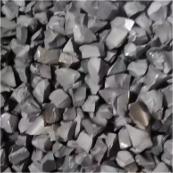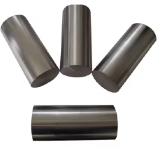**The Unplatable Truth: Which Metals Resist Electroplating?**
(What Metals Can’T Be Plated)
Ever wonder why your fancy titanium watch doesn’t have that shiny gold chrome finish? Or why your aluminum patio furniture stays silvery grey? The secret lies in a fascinating world of chemistry and surface science. Some metals simply refuse to play nice with traditional electroplating. This article dives into these stubborn materials, explaining why they resist, how experts sometimes coax them into compliance, and where their unique properties make plating unnecessary anyway. Let’s uncover the metals that just won’t plate.
**1. What Metals Resist Electroplating?**
Not all metals readily accept a shiny new coat through standard electroplating. This process relies on a metal’s ability to form a strong bond with a deposited layer in an electrolyte bath. Several types of metals often cause headaches:
* **Highly Reactive Metals:** Think titanium, aluminum, magnesium, and their alloys. These guys love oxygen. The instant they touch air, they form an incredibly thin but tough oxide layer. This layer acts like a shield, blocking the electrical current needed for plating and preventing adhesion. It’s like trying to paint over a layer of super-slick Teflon.
* **Refractory Metals:** Metals like tungsten, molybdenum, tantalum, and niobium earn this name because they withstand crazy high temperatures. Their melting points are sky-high. This very strength makes them tough to plate conventionally. They often need special, high-temperature processes or exotic plating baths that aren’t practical for everyday use.
* **Stainless Steels (Sometimes):** This is tricky. Many stainless steels *can* be plated, but it’s not simple. Their chromium oxide layer, which makes them “stainless,” is the same barrier that causes problems. Success requires aggressive surface preparation to disrupt this layer just before plating. Fail, and the coating peels off easily.
* **Other Problem Children:** Certain metals like beryllium (toxic and tricky) or zirconium (forms oxides like titanium) also pose significant plating challenges. Even some common metals like cast iron (porous, contains carbon/graphite) require special steps to plate successfully.
The core issue usually boils down to surface chemistry – that invisible barrier layer stopping the plating from sticking properly.
**2. Why Can’t These Metals Be Easily Plated?**
The reasons behind the plating resistance are rooted in the metal’s inherent properties and behavior:
* **The Oxide Barrier Problem:** For reactive metals (Al, Ti, Mg), that instant oxide layer is the main villain. Electroplating requires a clean, oxide-free metallic surface for the new metal ions to bond directly to the base metal atoms. The oxide layer interrupts this electrical connection and physical bonding. Removing it is hard; it reforms almost instantly.
* **Passivation:** This is similar to the oxide issue but broader. Some metals, notably stainless steels and chromium, naturally form a protective, passive film. While great for corrosion resistance, this film is terrible for plating adhesion. It prevents the necessary chemical interaction at the surface.
* **Hydrogen Embrittlement:** This is a big risk, especially for high-strength steels and titanium. The acidic solutions used in many plating processes can cause hydrogen atoms to be absorbed into the metal. This makes the metal brittle and prone to cracking, a serious problem for critical components. Avoiding this adds complexity.
* **Poor Conductivity:** Some base metals or their surface films don’t conduct electricity well enough. Electroplating relies on passing an electric current through the part. If the surface resistance is too high, the current can’t flow properly, leading to uneven or no plating.
* **Chemical Incompatibility:** The plating bath chemistry might simply be incompatible with the base metal. It could cause excessive corrosion, undesirable reactions, or just fail to initiate deposition.
These factors combine to make plating these metals far more difficult, expensive, and sometimes impossible using standard methods.
**3. How Do We Plate the “Unplatable” Metals?**
So, what if you absolutely *need* a coating on titanium or aluminum? Don’t despair entirely. Engineers have developed clever workarounds and specialized techniques:
* **Aggressive Surface Preparation:** This is step one, especially for stainless steels and reactive metals. Techniques include:
* **Acid Activations:** Using strong acids (like hydrochloric or hydrofluoric acid for titanium/aluminum) to dissolve the oxide layer immediately before plating. Timing is critical.
* **Abrasive Blasting:** Creates a microscopically rough surface for better mechanical bonding.
* **Specialized Etches:** Chemical treatments designed to disrupt the passive layer without damaging the base metal excessively.
* **Zincating (for Aluminum):** This common process involves dipping the aluminum into a zinc solution. The zinc displaces the aluminum oxide, creating a thin zinc layer that readily accepts nickel plating, which then accepts other metals.
* **Specialized Plating Processes:**
* **Electroless Plating:** This method doesn’t use electricity. Instead, it relies on chemical reactions in a bath to deposit metal (like nickel or copper). It can coat complex shapes evenly and often adheres better to difficult surfaces, especially after proper activation. It’s a go-to for aluminum and plastics.
* **Strike Layers:** Applying a very thin initial layer of a compatible metal (like nickel or copper) onto the activated surface. This “strike” layer provides a foundation that subsequent, thicker plating layers can easily bond to.
* **High-Temperature Processes:** Used for refractory metals, involving molten salt baths or other extreme conditions to facilitate deposition. Expensive and complex.
* **Alternative Coating Methods:** When electroplating remains impractical, other technologies step in:
* **Anodizing (Especially for Aluminum/Titanium):** Thickens the natural oxide layer controllably. It’s extremely durable, corrosion-resistant, and can be dyed various colors. It’s not metal plating, but a superb protective finish.
* **PVD (Physical Vapor Deposition) / CVD (Chemical Vapor Deposition):** These vacuum processes vaporize the coating material and deposit it atom by atom onto the surface. They work on almost any material, including the toughest metals, producing hard, wear-resistant coatings like titanium nitride (gold color) or chromium nitride.
* **Thermal Spray:** Melts the coating material (metal, ceramic) and sprays it onto the surface. Creates thick, durable coatings good for wear resistance, but usually rougher than plating.
The key is matching the right preparation and coating technology to the specific base metal and the desired final properties.
**4. Applications: Where Unplated Metals Shine**
Interestingly, the very properties that make these metals hard to plate often make them perfect for applications where plating isn’t needed or even desirable:
* **Aerospace & Aviation:** Titanium’s strength-to-weight ratio and natural corrosion resistance are vital for aircraft parts and engines. Aluminum alloys form the skin of planes, often protected by anodizing or specialized primers/paints, not plating. Magnesium alloys (hard to plate) are used in lightweight gearbox housings.
* **Medical Implants:** Titanium and certain stainless steels are biocompatible. Their naturally protective oxide layers prevent corrosion inside the body. Plating could introduce toxic elements or compromise this biocompatibility. They are used “as is” or with specialized surface treatments like passivation or specific oxide enhancements.
* **Chemical Processing:** Tantalum, zirconium, and special nickel alloys resist incredibly corrosive environments. Their natural oxide layers or inherent chemistry provide this protection. Plating could fail catastrophically in these harsh conditions.
* **Consumer Goods:**
* **Aluminum:** Used extensively in laptops, phones, and cookware. Anodizing provides durable, colorful, and non-toxic finishes. Think of your non-stick frying pan – that’s likely anodized aluminum.
* **Titanium:** Popular in high-end watches, eyeglass frames, and bicycle components. Its natural grey color, lightweight strength, and hypoallergenic properties are the selling points.
* **Stainless Steel:** Ubiquitous in sinks, appliances, cutlery, and medical tools. Its inherent corrosion resistance and cleanability are key. Passivation enhances this natural layer.
* **High-Temperature Applications:** Tungsten filaments in light bulbs, molybdenum supports in furnaces, niobium superconductors – these rely on the metal’s ability to withstand extreme heat without melting or degrading. Plating would likely burn off or fail.
In these areas, the base metal’s core strengths outweigh the need for a decorative or protective metallic coating via plating. Their natural surfaces are the best solution.
**5. Metal Plating FAQs**
Let’s tackle some common questions about plating difficult metals:
* **Can aluminum ever be chrome plated?** Yes, but it’s a multi-step process. It almost always involves zincating (or a similar process) to prepare the surface, followed by plating copper, then nickel, and finally chrome. It’s more complex and expensive than plating steel.
* **Is titanium plating impossible?** Standard electroplating is very difficult and rarely done commercially. However, titanium can be anodized (producing vibrant colors), or coated using PVD/CVD for wear resistance. Plating other metals *onto* titanium is the hard part.
* **Why does plating peel off stainless steel sometimes?** This usually happens because the passive oxide layer wasn’t properly removed before plating. Any trace of this layer prevents a strong bond. Proper, aggressive activation right before plating is essential.
* **What’s better than plating for aluminum?** Anodizing is often the superior choice. It’s integral to the metal, extremely hard, corrosion-resistant, can be colored, and is environmentally stable. It’s the standard finish for architectural and high-quality consumer aluminum.
(What Metals Can’T Be Plated)
* **Can you plate plastic onto metal?** Not directly via electroplating. However, plastics can be plated using electroless plating (after special surface treatment) to make them conductive, followed by electroplating. This is how chrome-plated plastic car parts are made. The process for plating metal itself remains distinct.
Inquiry us
if you want to want to know more, please feel free to contact us.


